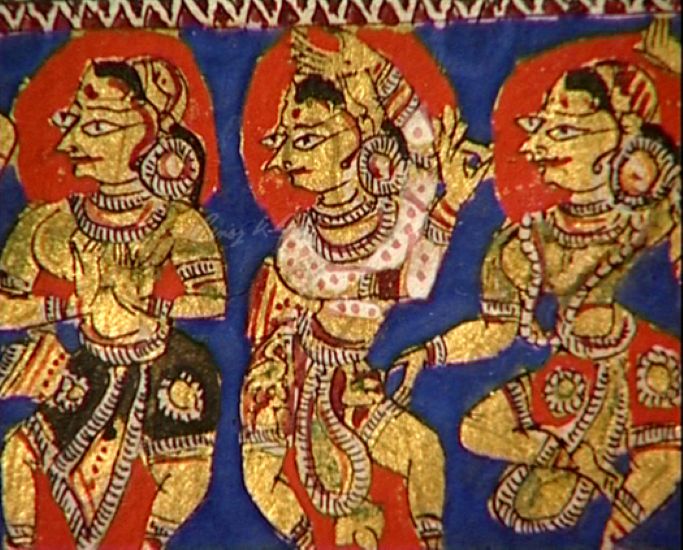Roots in sacred art: Buddhist and Jaina manuscript paintings

Benoy K Behl
The ancient Indian treatise on painting, the Chitrasutra of the Vishnudharmottara Purana states that paintings which are made with an understanding of the harmony of life have a beneficial influence upon the onlooker. It is this deep understanding and vision of life which ancient Indian art shares with us.
The paintings in the Buddhist illustrated manuscripts of the Pala period are extremely close to the great murals of Ajanta. The tradition seems to have come down directly from the cave walls, onto these narrow palm leaves.
These paintings take us to an enchanted place, far removed from the noise and clamor of the material world. A world of stillness, whose gentleness and beauty lifts our spirits and our thoughts. The lilting grace of these paintings reminds us that there is an end to the sorrow of the world.
Jainism flourished in India at the same time as Buddhism. Besides Buddhist paintings, the other great stream of paintings, which flowed in India through many centuries, was that of the Jains.
A severe famine in the 5th century CE threatened to break the chain of oral transmission of Jain teachings. At this time, vast numbers of manuscripts were written to preserve and to continue the beliefs and the canons of the Jain faith. Large numbers of painted manuscripts continued to be made thereafter through the entire medieval period.
Since times immemorial, the Jain community has been known for its prosperity and trading activities. Jain merchants were amongst the most prosperous and wealthy in India. They were the great patrons of art and temple building. They generously sponsored the making of large numbers of painted manuscripts, as it was believed that they would gain merit by commissioning these sacred works.
In the 10th and 11th century manuscripts, we see both the naturalistic Pala style and the linear style of the Jains. But slowly the linear tradition with its angular abstractions became the norm. By the end of the 13th century, all traces of Pala modelling, volume and weight had disappeared.
The introduction of paper in the 14th century as the popular base for paintings led to changes in the style. Earlier, the compositions had been strictly horizontal owing to the restrictive narrow shape of the palm leaf. Now the artist had a larger surface to work on.
Stylizations and conventions were developed and used extensively in the Jain paintings. Linear draughtsmanship defines the forms. Color is applied in flat washes. The stylized human figures with pointed noses and rounded chins resemble those at Ellora.
The Jain manuscript paintings are lively and vibrant. With animated gestures and rhythmic movements, the figures possess a life of their own. The protruding eye, extending beyond the line of the face, adds to the energy in these paintings.
Under the Glimpses of Culture series, India Habitat Centre presents an online talk and
screening of the film ‘Roots in Sacred Art’ (on Buddhist and Jaina Manuscript Paintings)’
produced by Benoy K Behl for Doordarshan on December 14, 6pm

